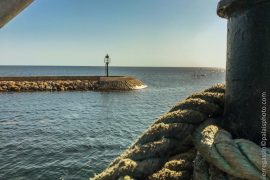After shaping and launched many destinations, including Tunisia in the early 60’s, Germany has become a tourist destination in itself.
In 2012, it is the seventh global destination in terms of arrivals with 30,4 million, ensuring revenues that amounted to 38,1$ billion. Germany is the world leader in business tourism with a market share of 11% of international business travel.
German tourist promotion falls under the “Deutsche Zentrale fur Tourismus” (GNTB), formed in 1948, under the Ministry of Economy. Since 2012, only one of these is responsible for promoting tourism in Germany and abroad. Promoting Germany in the domestic market is provided by the states, that is to say the regions.
The GNTB has two objectives: to strengthen the positive image of Germany and its various destinations abroad and increase the number of tourist nights. For this, it has 30 offices worldwide, including 11 directly managed by the GNTB. The others are in the partnerships. It is important to remember that the budget GNTB is € 34.9 million in 2011 (after reaching 36.4 M € in 2010) with a state subsidy of € 27.2 million. Nearly 3/4 of the budget comes from the Ministry of Economy, the rest comes from the Länder, which are full partners and fully adhering to the GNTB (institutional bodies and private enterprises) and sales benefits.
On the other hand, the German National Tourist Board (GNTB), is the national “tourist office” of Germany. It promotes its tourism activities on behalf of the Federal Ministry of Economics and Technology (BMWI). The GNTB develops strategies and products to strengthen the positive image of German tourist destinations abroad and boost tourism in Germany. To carry out this mission, it has 30 local offices worldwide.
A bet on youth, culture, nature
For several years, Germany has held the title of the countries generating the most international travel worldwide. Its citizens are very big spenders. According to the World Tourism Organization (UNWTO), expenditures amounted to over 83 billion in 2007.As a comparison, those of international tourism amounted to USD 76 billion for the United States, 72 for the United Kingdom, 37 for France and 30 for China.
Abroad, the German model is seen as an economic and social success with a very low unemployment. German rigor and brands of German companies help to gradually build a positive cultural image of the destination. The Germans are said to love and respect nature, attentive service and good price / quality ratio then develop an intelligent supply and niche and bet on the cultural, ecotourism, … The sharpened market strategies that fit whack a population and then reunited after the fall of the Berlin Wall.
The result is pending. After nearly two decades of investment, tourism became central to the German economy, representing 2.9 million direct jobs, 4.4% of GDP (in 2012, tourism has exceeded sectors Construction (4.3% of GDP) and automotive (2.4%) and becomes a favorite destination for European travelers.
The reasons for this success are many. In addition to its good international image, the country offers an excellent quality-price, especially in the hotel business, where there is an average tariff to 64 euros, against 104 in the rest of Europe.
The destination also offers a variety of landscapes. With 14 national parks, 101 nature parks and 15 nature reserves. A network of hiking trails that stretches over 190 000 km. Cyclists can also enjoy 50,000 kilometers of cycling paths. With 330 German spas and resorts, wellness holidays are also important.
The culture is not far behind. Germany claims the European leadership in cultural trips made by the population of the European Union, with 12% market share and highlights its 37 sites listed as World Heritage by Unesco around which it has created wealth. In the country, visitors will be spoiled for choice with the 6250 museums, 6000 annual exhibitions, …
Should we go on to list the giant step has been able to achieve Germany becoming a tourist destination in its own right? Must remember that Germany has turned away from the Tunisia destination since the attacks in Djerba?
A model for Tunisia?
Beyond economic factors, it is the quality of services, a rough environment and produces so little in tune with the expectations and motivations of the German tourist who made this market tumbled in our country. In 2011, a 41% decrease in tourist flow was re-registered since during the same year, 270,000 tourists chose our country as a holiday destination against 458,600 in 2010. It is indeed far from time when Tunisia realized over a million German tourists annually!
Although in the wake of disturbances related to the “Arab Spring” in the region, the Germans timidly return to Tunisia, we are able to ask whether this is related to the adequacy of supply with expectations and more “grace “to the crisis that knows the Egyptian tourism.
With 82.5 million inhabitants, Germany is the most populous EU country. In recent years, significant changes have taken place in terms of market behavior and expectations. The Germans have 6 weeks of vacation a year and dedicate an average of 4% of their income to the budget of holidays abroad. The ranking of their favorite destinations has also changed. Spain, Austria and Italy now occupy the top of the podium. France, a long time favorite, is relegated since 2000 to the fourth position.
Today, Germany provides great efforts to surround Tunisia during its transitional phase. The Tunisian revolution and the disturbances in the region are profound turbulence on tourism. It is essential to be careful with the models to build and how to deconstruct those that failed.
For beyond all this is to have the means to choose. In the present circumstances, it is imperative to engage in innovative and prudent ways to restart the Tunisian tourist machine at a minimum cost. Efficiency and inventiveness. In this, the German model is an example.
Amel Djait
{mainvote}









